By default, when we create API using the AWS API Gateway service, the default resource generated is the root path “/“.
And then two steps are needed:
- first, create a method under the “/“ resource, for example a POST method
- deploy the API to a stage with any stage name you like,e.g. prod
In this case, an API endpoint will be created in this format: url/stage_name.
For example, this is one valid endpoint: “mxxggeoyvj.execute-api.us-east-1.amazonaws.com/prod”
The above steps are shown in more detail here:
Create API with API Gateway
Now, how to create multiple endpoints in the same API?
step 1, create a new resource under the “/“ resource
Clicking the “/“ path, then click “Action” and choose “create resource” as the following screenshot: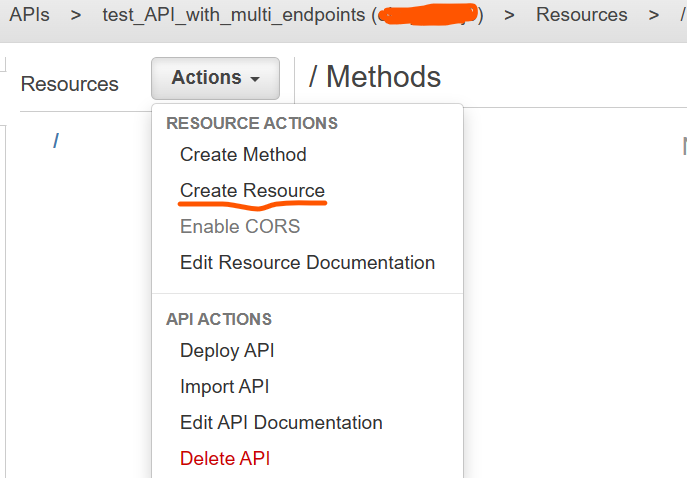
This will lead to the details of creating the child resource as our first endpoint as the following screenshot: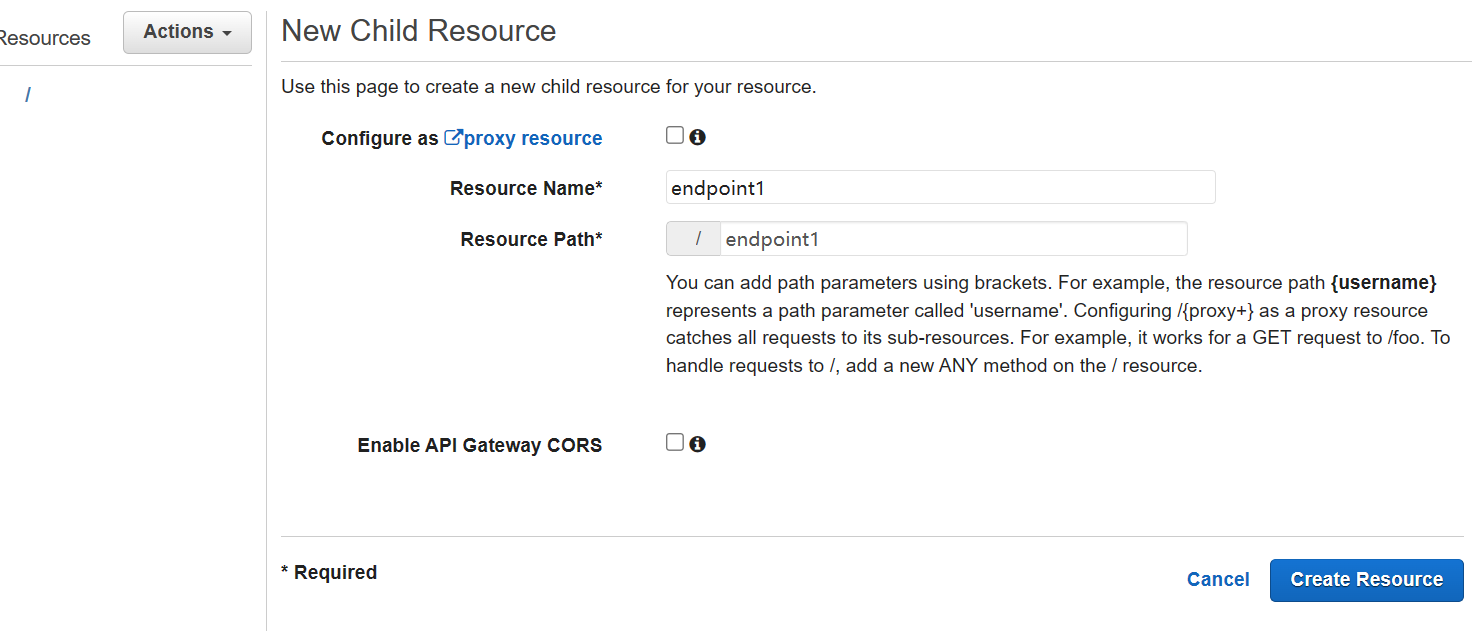
so this will be our first endpoint. But we need to continue to create an actual method, such as a POST method for the first endpoint like this: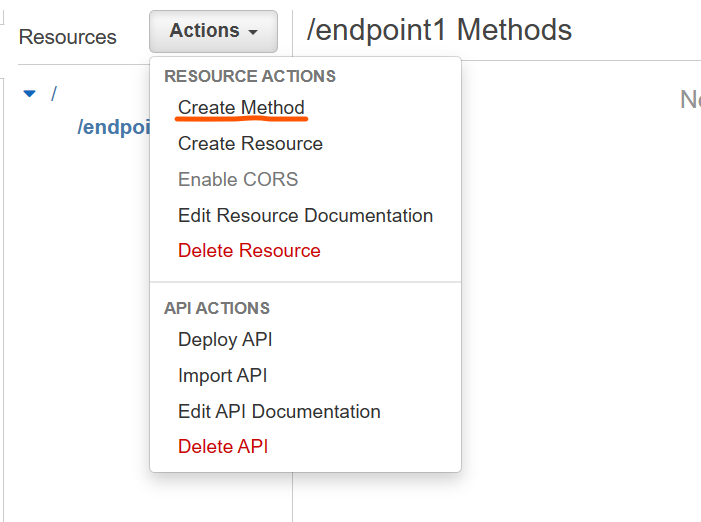
Creating method is similar as before, just hook up the mehod with a lamda function, for example.
step 2, create a second resource under the “/“ resource
Clicking the “/“ path again, then click “Action” and choose “create resource” again, to create the second endpoint.
Notice that, we need to click back the “/“ path in order to create parallel endpoints under “/“ path,
such as “/endpoint1” and “/endpoint2”.
This also means, if needed, we could click the first endpoint path, and then create another resource, it will create an hierarchical path
like this “/endpoint1/endpoint2”.
After creating the second point, again, we need to create a POST method for the second endopint.
After all the above steps, the results of two parallel resources ad two endpoints are as the following:
step 3, deploy the API to stage
After we created two endopints as child resources, and each resources has a POST method, we are ready to deploy the
API to a stage, for example a stage named “prod”:
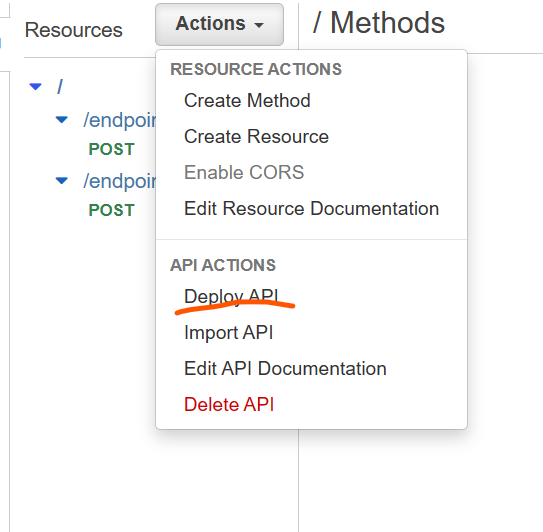
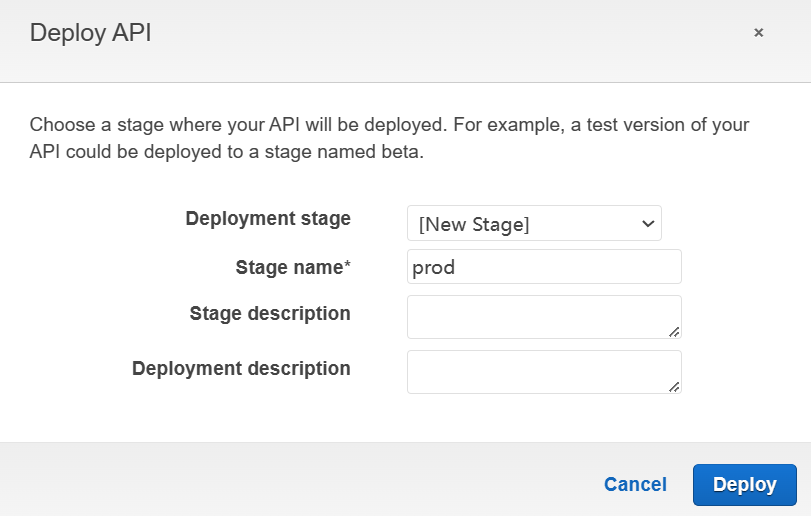
After the prod stage is deployed, we can check indvidual endpoint and its invoking url like this: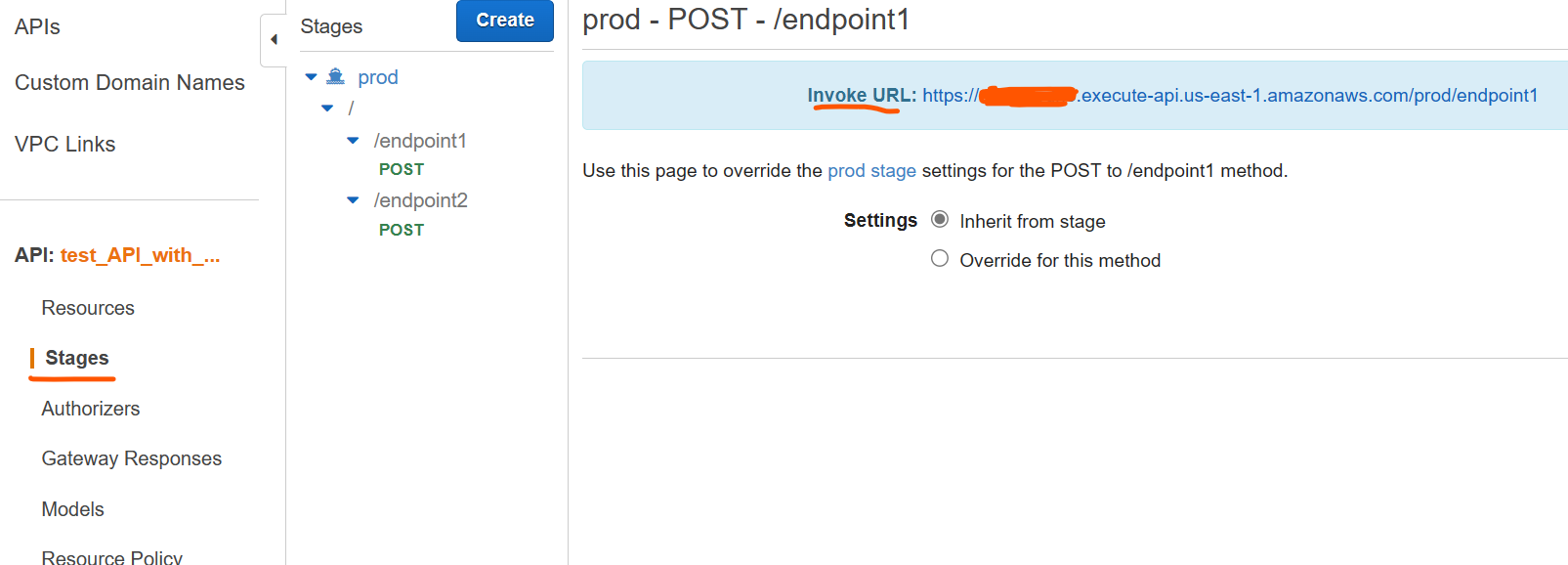
Great job done!

